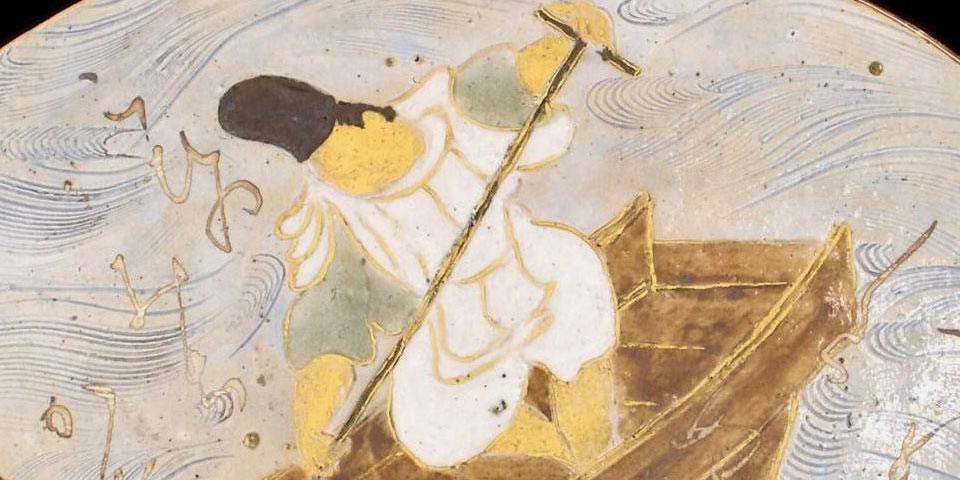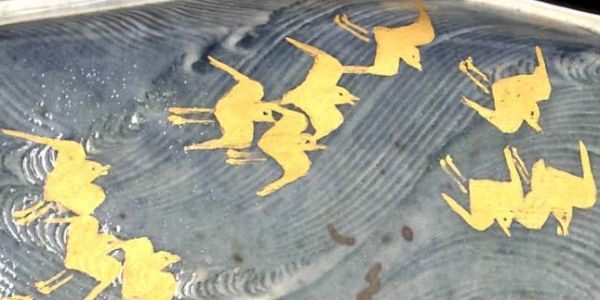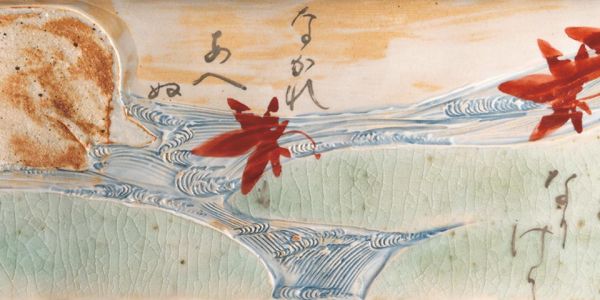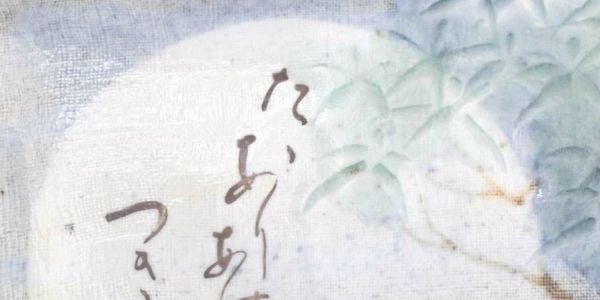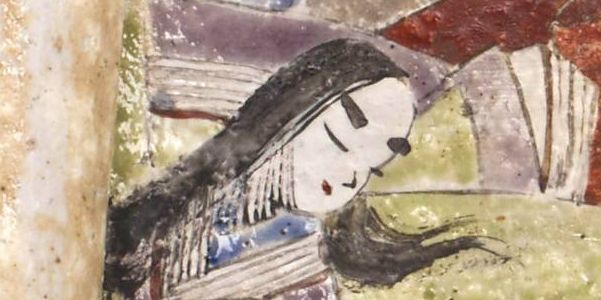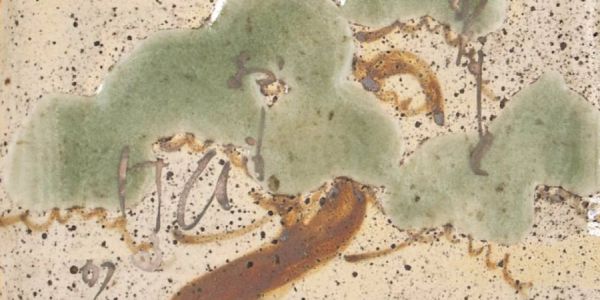Japanese ceramicist Mitsuya Niiyama created these one hundred ceramic pieces as interpretations of the poems of the Hyakunin Isshu.
The Ogura Hyakunin Isshu is a collection of one hundred poems composed between the 7th and 13th century CE and compiled in 1235. The collection was developed into a popular poem-recognition card game first introduced in the 17th century and still popular in Japan today. Written in the indigenous Japanese tanka (or waka) form using five lines with a set number of syllables, 5-7-5-7-7, these poems speak on the subjects of courtly and romantic love, nature, and spirituality.
Born in Kyoto in 1922, Niiyama worked as a pottery salesman for 20 years before taking up ceramics on his own. The pieces in this collection were created between approximately 1958 and 1968, using clay from Kyoto, and were shaped by hand, without the use of the automatic wheel. Niiyama formed and decorated each pottery piece in relation to the themes of a specific poem from the Ogura Hyakunin Isshu, and inscribed each with selected lines from the poem that inspired it. During his lifetime Niiyama traveled and exhibited his work worldwide, including several visits to Illinois State University to provide lectures and demonstrations about his artistic methods.
The current digital collection includes views of each pottery piece from multiple angles, as well as brief descriptive notes on the related poem, originally produced for an earlier digital exhibit of the collection. To represent the synergy between poetry and visual art in Niiyama’s work, each piece in the digital collection is also accompanied by the full text of the Japanese poem that inspired it, audio of the poem being read (originally created for the earlier digital exhibit), and an English translation of the poem.
